SPECTRUM
Autumn 2023

Autumn 2023

the Highest Harp Concert
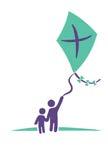
Latest News | 2-3
* Turning the sod on Merlin Park
Brendan's Doodles | 3
CF and Liver Disease| 4-13
* Cystic Fibrosis Liver Disease Study

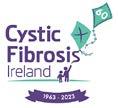
* Living with CFLD - Aileen Henderson
* Living with CFLD - Shauna Morrissey
Member Services | 14-17
*PSAG: One Year On
*Culture Night 2023
Spotlight | 18-23
*On top of the world - the Highest Harp Concert on Kilimanjaro
Research Update | 24-31
*CF Telehealth PPI
*Pathways: Voice Your Opinion
*Enhance: PPI Involvement

CFRI | 32-33
*New season, new Logo
My Legacy Month| 34-35
Fundraising| 36-43
* Challenges and Events
* Thank You
EDITOR: Nicola Delaney Foxe
FRONT COVER: Caroline Heffernan at the top of Kilimanjaro
DISCLAIMER: The views of contributors, when expressed in this publication, do not necessarily reflect the position or policy of Cystic Fibrosis Ireland.
CFI will be developing its next strategic plan for the period 2024-2026 and beyond. Over the next few months we will be seeking your input. CF care is now entering into a new and exciting phase, with much changed because of a number of factors, including in particular the availability of the four modulator drugs of which Kaftrio is the most important.
However many challenges remain. A significant minority of people with rare mutations who have the potential to benefit from Kaftrio have at present no access. This is primarily because the EMA license is too narrow, even compared with the license in the US. CFI will be working with the 39 associations involved with Cystic Fibrosis Europe to seek to ensure that all those who can potentially benefit from Kaftrio secure access, including in Ireland.
We will urge a significant broadening of the license - even beyond what is available in the US based on existing and emerging evidence. We will keep you updated on developments. In the meantime, the next extension of Kaftrio on age grounds for two to five year olds on the existing EMA license will likely be available in Ireland by the end of this year. CFI recognises that not all can benefit from drugs such as Kaftrio and we will continue to urge support for research into further innovative medications, including gene editing for example.



Galway University Hospital was delighted to announce that work went underway on the new Adult CF Out Patient Department on Wednesday, September 20th.
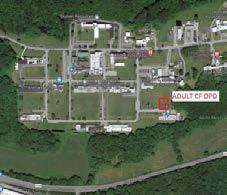
Once complete, the Adult CF OPD will have sufficient capacity, design features and specification to allow for best practices in Cystic Fibrosis treatment.
The new build will minimise cross infection and enable the Merlin Park University Hospital CF multidisciplinary professional team to provide long-term, recurrent support for ambulatory patients. The project consists of replacement accommodation for Adult Cystic Fibrosis OPD services.
The facility will take approximately nine months to construct and will cost an estimated €3.7 million to complete, with the CFI contributing €700,000.
Mary Lane Heneghan of the Galway Branch of Cystic Fibrosis Ireland welcomed the progress, adding: “The forthcoming out-patient unit in Merlin Park University Hospital for adults with CF, is a partnership initiative between GUH, CFI and the HSE.
“It follows on from a similar partnership initiative for Paediatric Outpatients in 2014, which was supported by a house being bequeathed by Andy Browne, uncle of Marion Keane.
“I wish to acknowledge the fundraising efforts of the people of Galway over many years which has raised €700k towards the cost of this project. This is a time of hope for people with CF in the West of Ireland,” she added.
David Coen, a patient with Cystic Fibrosis attended the sod turning.
“This is a very happy day for all CF adults in Galway and the West of Ireland. Since adults like me got the new medication our
lives have been changed and there is less need for long term stays as an in-patient and greater need for an Outpatients Unit for our ongoing care.
“This unit in Merlin Park University Hospital will be much more accessible with better parking and it will make a huge difference to adults with CF. I would also like to thank Dr O’Mahony (CF Consultant) and his wonderful team in Galway University Hospital for their ongoing care and support,” he added.
Philip Watt CEO, also attended the turning of the sod.
“The Adult CF Outpatient unit will be another significant positive step in providing not just adequate but world class services for adults with CF in greater Galway area.
“It is a time of great hope in CF care through a combination of new and innovative medications: more resources for clinical staff and improved CF hospital centres. However, CF is still a very challenging life-threatening disease,” he said.
Mr Watt thanked Galway University Hospital; HSE West and the Galway branch (Regional Branch of Cystic Fibrosis Ireland) for all their work in progressing the unit.
Chris Kane, Hospital Manager for Galway University Hospitals added: “University Hospital Galway is designated as a Specialist CF Centre for adult patients in the West and a referral point for people with Cystic Fibrosis throughout the Connaught region.
“This state-of-the-art CF out patients department will ensure that we provide the highest standard of care to our CF adult patients across the region.
“This is a coordinated and collaborative project between the HSE, Saolta, GUH and CF Galway/Ireland and I want to thank CF Ireland and the local branch who tirelessly fundraised to make this project a reality. It will make an immense difference to patients and their families,” Chris added.

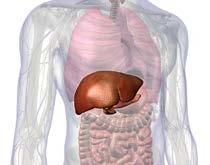
The advances in the care and treatment of persons with Cystic Fibrosis (pwCF) over the last 20 years are remarkable. However, for a small group of pwCF who develop the rare complication of liver disease there is still much to be done. As the focus of this newsletter is liver disease we hope it will highlight where the gaps in knowledge are, what are the important next steps and how you can continue to help.
As I said liver disease is a rare complication of cystic fibrosis (CF). Very little is known about the cause of liver disease in CF, and we cannot predict who will get liver disease or how it will progress. While many pwCF will have occasional abnormal liver blood or ultrasound tests, most will not get severe liver disease. However, a small number of pwCF (less than 10%) will develop severe liver disease with a poor prognosis. This marked difference in the outcome leads to a lot of anxiety and uncertainty for pwCF and their families. It is also a considerable challenge for CF specialists or liver specialists trying to decide the likely impact of abnormal blood or ultrasound tests when they are identified.
While we had shown in three small case control studies that children who developed CFLD had a worse outcome, there were many questions about CFLD which could only be addressed by conducting a long-term follow up study. With funding from the Health Research Board, we established the Irish Longitudinal Study of Cystic Fibrosis Liver Disease (ILSCFLD) in 2007 to address some of the questions about CFLD. Our aim was to follow a cohort of pwCF in Ireland for 20 years to see how many pwCF developed new onset liver disease, identify any risk factors associated with the disease, and describe how the disease progressed during followup. The parents of 95% of children attending any pediatric CF centre in Ireland in 2007 consented to their participation in the study, and we have continued to enrol new participants in 2012 and 2017.
Starting in 2007 we carried out a detailed assessment of all participants once every five years (2007, 2012, and 2017) and we are most grateful to all of you for your time and commitment. One of the important features of this study is that we followed all participants as they transitioned to adult care and now many of our participants are well into their 20s. This is very important because it allows us to properly examine who and when pwCF get severe liver disease.
One of the many challenges for research in CFLD is the lack of an accurate diagnostic test to identify those with severe liver disease. Currently a diagnosis is based on liver blood tests, liver ultrasound at annual assessment both of which can be inconclusive. The clinical opinion of a liver specialist may be required. We grouped participants as follows (i) those with no abnormalities of liver tests (blood or ultrasound) called No liver disease (NoLD) (ii) those with abnormalities of blood or ultrasound tests which did not meet the criteria for severe liver disease and called nonspecific cystic fibrosis liver disease (NSCFLD) (iii) those with severe liver disease who all had evidence of increased hepatic blood pressure called portal hypertension. We called this group Cystic Fibrosis Liver Disease (CFLD).
In the first publication from the ILSCFLD we reported on the 10-year outcome for CFLD. This was published in the Journal of Cystic Fibrosis (J Cyst Fibros. 2023 Jul 24:S1569-1993(23)00830-5. doi: 10.1016/j.jcf.2023.07.002. Online ahead of print.PMID: 37495468).
Of the 522 participants enrolled in 2017, 480 (92%) participants had complete data available for analysis. Of the 480 participants in the analysis, 35 had established CFLD in 2007, 110 had NSCFLD while 335 had no evidence of CFLD. During follow-up 28 (6.3%) developed new onset CFLD. 25 of the 28 were under 10 years of age in 2007. This means that CFLD almost always developed in children under 10 years of age.
We also found that of the 77 participants over 10 years of age with normal blood or ultrasound tests in 2007 ,none had developed any evidence of liver disease by 2017. The average age of the 77 participants is now 23 years. This also confirms that new onset disease occurs at a very young age.
In addition, we found that most children with non-specific liver abnormalities did not progress to advanced liver disease, however longer follow-up is needed to determine if NSCFLD has an impact on outcome.
As has been reported previously by us and others we now confirm in this prospective study, CFLD is associated with increased mortality and a shortened life expectancy. The differences in mortality and life expectancy for the small proportion (approximately 6%) of those who develop CFLD compared to those with no liver disease in this study is considerable and needs to be addressed urgently.
This study provides much reassurance for pwCF and their families. Those with normal liver function tests and normal ultrasound after the age of 10 years are very unlikely to develop new onset of liver disease in CF. Therefore, if we want to address the impact of this disease on mortality in CF and identify the cause of CFLD we must focus on clinical practice supported by research on young children. Most children with nonspecific liver changes will remain stable though further follow-up is required to assess the impact of NSCFLD on outcome survival.


In the small number of children who do develop CFLD, the onset is before the age of 10 and the prognosis for CFLD remains poor. It is important that there is a renewed clinical and research focus commencing in early childhood to ensure that this small group of pwCF can expect a similar life expectancy to their peers.
Without our study participants and their families who gave so generously of their time, this study would not be possible. While it is easy to be a participant in a 20-year study if you have the condition under investigation, it is a far bigger commitment if you are in the comparator group.

To all of you who travelled specifically to have a liver examination, who allowed us visit you in your homes or who patiently completed the research in the clinics, we do not have words to express the importance of your contribution. Having a large properly chosen and carefully evaluated comparator group who remain in the study is one of the things that makes the findings of a research study valid and applicable to other populations with CF.
Many of you will be unsure if you are part of the ILSCFLD study – if you were attending any pediatric centre in Ireland in 2007, you are most likely in the study as we had a 95% participation rate, and if you were diagnosed in a pediatric center since then you are also very likely to be a participant.
Thanks to all the CF consultants, CF nurses, and clerical staff who made sure our data and follow-up was as complete as possible. Thanks also to the HRB who have funded this research since 2007, we are very grateful.

We are very grateful to CFI who will continue to fund this research under the research funding programme of the Health Research Charities Group in collaboration with the HRB. I urge you all, particularly those who do not have CFLD, to continue to participate in the ILSCFLD. The ILSCFLD has great potential to shed further light on the risk factors for CFLD and how best the condition should be managed in order to improve survival for this small group of participants.
Dr Emer Fitzpatrick and her team are taking over the project and will be starting the 15 year data collection program later this year. Because of new data protection legislation it is necessary that all participants re-consent to participate in the study.
I hope that everyone will continue to support this important research resource for those with all forms of CF liver disease.
Only a small minority of CF patients have liver involvement so as a group we are quite unique. In recent years there has been more research and focus on this subject which is promising for the future management of CF.
I was diagnosed with Liver Disease when I was eight years old. Aside from always having an enlarged liver, spleen, low platelets and bad bloating, I never had any issues and managed my daily life the same as any other child. I attended a paediatric liver clinic elsewhere as a child (all my general CF care was and still is managed locally). The doctor then had said to me and my family that not all children with liver disease end up needing a transplant and in a lot of cases things just settle down. I then transitioned to adult CF Services when I turned 18.
For the first few years, my liver care involved three monthly visits. I remember the day my doctor briefly mentioned that it may be good for me to transition to the liver transplant clinic - not because I needed a transplant yet, but because I would more than likely need one at some stage and it would be better to be in the system. I’m not going to pretend I’m not a worrier because I definitely am but it’s funny, for some reason on that day that I heard this, it went completely over my head because I was going to pick up my new puppy after the appointment! I still think of her as my liver transplant distraction dog. I also knew at the time that as I was really well, I was confident that I was nowhere near transplant stage. I did have a transplant assessment when I first transitioned. This involves a series of tests including scans, lung function tests, heart tests and lots of bloods to see if a transplant is needed. As expected, they decided I was too well to need one yet.
For the next few years I stayed well and stable as I attended my regular liver transplant clinic. During this time I started the new modulator drug at the time ‘Orkambi’. I stayed on this drug for two months before I had a drug reaction which involved a severe rash and itch. It was the worst experience I had in my CF life up to that time (not that much of a tough life then, lucky me!). I couldn’t get rid of the itch, my whole body was stinging and I had to sit outside in the cold wrapped in cold bed sheets, to get any sort of relief. Thanks to my friends for the rotating turns they took to facetime me to keep me distracted! I then stopped Orkambi and that was the end of that experience.
Soon after, I started the second modulator drug ‘Symkevi’ and did really well on it. It took a while for me to notice any changes, but looking back it turned my life around for the better and despite my fear of not being able to tolerate the new drugs since my Orkambi experience, I did very well on Symkevi.
After a while, just as Covid was kicking off and about two weeks after myself and my now boyfriend made things official, I had my first liver related hospitalisation. I had always said to him I was never in hospital and

Hi, my name is Aileen Henderson and I’m 27 years old. I have Cystic Fibrosis and CF related liver disease.
often forgot I had CF. Well lucky him, this was all about to change and he was thrown straight into the deep end! Over the space of a few days I started to get what seemed like severe bloating. I’m used to bloating, but this time it felt different because it wasn’t going down over night. As time passed, it felt really uncomfortable and I found it such an effort to move around. I also didn’t feel like eating because I felt full all the time. I soon contacted my CF team and they suggested taking Movicol, which is a strong laxative.
Over the years I suffered with constipation and would have to take up to 10 sachets of Movicol, which is a huge amount, but things had settled down in that department since starting Symkevi so I was pretty annoyed that it had made a comeback. It was really difficult for me over the following days because I was so full up already and I had to drink the Movicol with 125mls of water each time. I think I worked up to 12 sachets so 1,500 mls of salty Movicol water every day on top of my massive stomach was not fun!

There was no improvement so I was sent for a scan where they discovered that I wasn’t badly constipated but I had fluid build up from my liver which meant I had all my liver fluid and all the water from the Movicol sitting there in my little stomach. I was literally drowning! I was admitted to my local hospital and during this time I was weighed. My weight at the time was about 63kg but when I stepped on the scales I was 75kg meaning I had about 12kgs of fluid. My liver was not happy and it wasn’t filtering things properly. My scan also showed up a clot in my splenic vein which is the vein that connects the liver to the spleen. I was then transferred by ambulance to a hospital further afield. My mum wasn’t able to come with me because of Covid restrictions but she drove up behind the ambulance (Liz is the local hero!).
I stayed there for a few nights while they decided what to do. I also had another transplant assessment at that time. Unfortunately I wasn’t able to start blood thinners which would be the normal protocol for a clot because I am also at risk of bleeding because of my low platelets. I was given diuretics to get rid of the fluid which felt like such a relief on my body that was getting so heavy. Despite the fact I couldn’t get rid of the clot, I recovered well and my team were happy with me. I did have to half my Symkevi dose to protect my liver as it wasn’t as stable as before. It was also decided that I was still too well to need a transplant.
I then returned to my normal life. I was definitely the fittest I’d ever been during Covid which seemed to be the case for everyone because there was nothing going on! I spent my days sea swimming in the freezing cold, doing at home workouts and I would disappear for hours as I ran around the country back roads. I had my first two vaccines when I got Covid and I was absolutely fine with it. I have definitely had worse sicknesses in my life!
It wasn’t long after this that I began to develop stomach problems that were different to my usual. My team in my local hospital checked me out and did my liver function bloods which all came back my normal baseline so there was no real concern. There was a possibility it could be gallstones but that

they would likely pass in a few days. I went back home but still saw no improvement. I was finding it very difficult to eat and was struggling a lot with fatty foods. It was then decided to do a scan where they discovered that my previous clot I developed, had extended into the main portal vein of my liver. This was different to the first clot and not as straightforward to recover from as the portal vein carries 80% of blood to the liver, therefore mine was really struggling.
Blood thinners still were not an option. My liver bloods started to rise after a few days and my eyes went quite jaundiced. The liver is connected to the small intestine and because mine wasn’t getting the blood supply it needed, it was also affecting my digestion and bile ducts which was my causing my stomach/digestion issues.
Over the course of a couple of days, the news I was getting was that this issue would make transplant quite difficult because to plumb in a new liver you need good veins which I didn’t have. I was discharged from my local hospital and waited over the weekend to be seen as an outpatient in another hospital on the Monday. That weekend felt decades long, with all the unknowns. I went into that appointment extremely stressed but came out reassured. The outcome was that a transplant had gotten much more complex and that it was likely I would need a liver and small intestine transplant because of the issues with my veins.
These are called multivisceral transplants or multi organ transplants which are not done in Ireland and only in the UK (leave it to me to change things up a bit!). Despite this, I came away from the appointment feeling quite uplifted because unlike before, I knew there were options. I was referred to the UK where they presented my case to their multidisciplinary team.
I waited about six months then before hearing back from them. This was another stressful time because I still didn’t really know what was happening. However, I did go back to a relatively normal life and was started on a drug called Ursofalk to help the flow of bile which made my stomach and digestion much better although I still had to be careful with what I ate.
During this time I graduated from Music College in Dublin, went on holidays, got back to the gym and running and started a Masters in Digital Marketing in NUI Galway.
It was around New Year 2023 that I received my first form of contact from the hospital in Cambridge with the news of how the meeting went. Their first priority was to start me on blood thinners which I still do daily and I’m so glad I’m on them as it will hopefully mean I won’t develop any new clots, even though the old ones are still there!
They also said that they didn’t feel like a multi organ transplant was necessary. I do feel quite lucky because my liver had


created its own vein called a splenorenal shunt. This doesn’t happen in everyone but it means that as I stand at the moment they can use this shunt to provide the blood flow to my liver when I need a transplant.
Receiving that letter was such a relief. I’ve always known I’d need a liver transplant but I definitely wasn’t prepared for how complicated things would get. I was and still am very thankful that liver transplant by itself seems possible.
Since then I have had a few telephone appointments with my consultant over there and I definitely trust them with everything, especially when my time comes to get this dramatic liver out. I think it will miss me though because it doesn’t seem to want to leave!
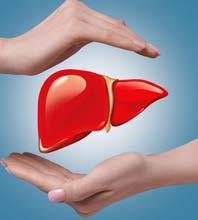
Again, I recovered better than I ever had expected and I still can’t believe it’s been two years now and I’m living a whole new life. When Kaftrio first came out I knew it would be a write off for me as these drugs can be harsh on the liver. It wasn’t necessarily a risk I needed to take as my lungs are good thankfully and it was hard to find how it could possibly improve things because I was doing so well. I didn’t give up asking about it though because I was seeing all the success stories and after a while my thought process was that if I was going to be going for transplant I wanted to be in the best possible health I could be. I thought maybe it would help improve my stomach more. So I started on half the dose and had to monitor my liver bloods very carefully.
I haven’t looked back since, I’m now on the full dose of Kaftrio and my liver has remained stable. I teach children music during the day, perform as a lead singer at gigs and weddings at night, attend the gym four times a week and go to Pilates classes.

I have so much energy, no issues with my stomach (I can eat everything) and I forget my lungs exist! I really do feel so much better than what I did even as a child and also feel like I’m in the best position to be able to go through such a big operation like a transplant whenever that time comes.
My sweat test pre Kaftrio was 83 (anything above 30 is classified as CF). My sweat test has now come down to 13 since starting Kaftrio so I actually have a normal sweat test. The past few years have taught me a lot as a person but also how advanced the medical world has become.
I’m so grateful for my three teams in each of the three hospitals for looking after me and despite my setbacks recently it really, is the best time to be living with CF!
I had a hard time in my early teens and I think that’s probably when I noticed it more. Suddenly doctors were asking me why my bloods were “x,y,x” (all over the shop) and nothing I could come up with was obvious enough to shed a light on what was happening here. At age 15, I was diagnosed with CFRD which I believe complicated, if not further escalated, all matters relating to my liver disease. There were always questions that were not quite easy to get an answer if not an understanding about.
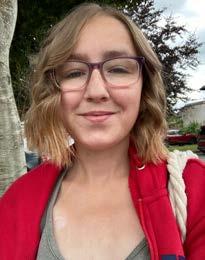
By the time I was 17, I was transferred fully to an adult CF unit for all of my care and got to know the CF team, diabetes team and hepatology team really well. I’ll admit at first, myself and a doctor didn’t get off to a great start. At this point I could feel the effects of a diseased liver creeping on but I felt that the doctor didn’t want to hear what “some kid” had to say about how my treatment was being managed.
I had at a hepatocellular carcinoma on my liver or what was initially first described to me as a “lesion”. Let it be known from me, that this term is only ever one that is used when the truth is unknown as to what they are actually looking at, and do they play dress up with that word to call it something and try to figure it out a little while longer.
I wasn’t happy upon hearing of a “lesion” the first time but when the second one appeared and all the while I was deteriorating, and coming in and out of hospital constantly, I was certainly not happy to hear it for a second time after another scan showed that another “lesion” had appeared and the previous one that was sitting there was still getting bigger. It was then that a doctor and I crossed wires. I knew these “lesions” had to be contended with and I knew I couldn’t sit and wait another six months with that anxiety hanging over me whilst feeling it impede on my body too. Your body is amazing really, it always has its way of letting you know when it’s off. Sometimes those small subtle little hints are the really big tip offs that are worth paying close attention to. I suppose I am lucky I have always had a strong awareness of what was going on and what I was feeling, so I have always been able to communicate and be direct with my needs and experiences.
While I was in hospital one admission in September 2011, I wrote a letter to the doctor and it was read out while I lay down in a heap on the bed on the ward with my dad present at the time. It was emotional. I cried and just let it all out and the doctor suggested after reading my letter and taking in my frustrations as well as all the questions I had, the best thing to do was “forward the ball over to the transplant team” and just like that after those words were said, it was like I had just catapulted backwards in divine timing.
I turned the colour of Lisa Simpson. I gained so much weight in fluid I could barely move myself. Nurses were tossing and turning me. I itched like crazy and even witnessed someone beg to be comotosed to be put
Hi, my name is Shauna. I had CFLD from a young age. I didn’t know what it meant for me later down the tracks, but I knew it would come to a head at some point in my life.
out of their misery. No creams, tablets or lotions worked for the itch as it was the same build up of toxins causing it as the other jaundiced parts of me, those lovely thundery eyes and that sun-tanned skin.
I stopped eating and began falling asleep in my dinners that I was never able to stay awake for anyway. My weight went right up to 70kg mark (to put context to that my dry weight is around 43kg now however with kidney impairment) to just give an idea of how much fluid I was carrying and the discomfort I had. I was listed for transplant in December 2012, after a long anticipated phone call that in the end boiled down to a decision to be made by the radiologists as to whether the “lesions” which we knew were “hapatocellular carcinomas” were small enough to be operated on safely without TACE intervention, and thankfully they were.
I was then activated on the list but over the course of the year going into and through 2012, I was taken off the active lists at times to recuperate during a plethora of exacerbations which saw one being my last before I was called to have my surgery.
In July of 2012, I went into hospital the usual way, onto some random ward somewhere. After a few weeks, we were moved to a bright shiny new unit and I gave one of the rooms, it’s first patient. I wasn’t in there long getting used to the new novelties of bigger wardrobe space and fancy screens before I was excited and due for release home or so I thought.

Actually as it turned out, I wasn't doing as well as I felt I had been, and begrudgingly agreed not to unpack my bags that were ready waiting to leave at the door that August day. Just as well I didn’t as it was probably what saved my life and the reason I’m alive.
That night if I had gone home to my country house I would not have been so fortunate with an ambulance to the right place, if even I got one at all, so I was definitely in the right place at the right time when it happened. The nurse came in to start her evening rounds as usual and when she came in 'I said I didn’t feel well' and I asked for something to get sick into. By the time she came back there was my blood all over the ground that I had just wretched up out of my stomach and it kept pouring up, painfully.
The doctor on call that night came in and banded up the varrices that had ruptured and caused this massive bleed in my oesophagus. After that episode, I recovered for a bit in HDU before returning to the new unit from before. A transplant coordinator came at around 23:30 on the 23rd Aug 2012 to tell me they had a liver there and waiting. I was in shock after this huge scare I felt surely this was it. I was so ready for it, I knew this was my time.
I was actually listed on the child’s UK list and was top ranked here in Ireland at the time according to MELD scoring. This is the best way to ensure priorities are managed on transplant list waiting times, and thankfully the right match at the right time did come. But it is very difficult for recipient and family during all of that time in the unforeseen and then of course there’s the poor donor to consider who just lost their life and that donor family to consider too.
My heart always thinks of them and always will. However, CFLD may disappear for some time but it can and typically will in time rally up again. Without going into too much now, I’ve had a fantastic 11 years on the back of this (old now!) liver, my health isn’t good.
One of the side effects is having to take immunosuppressant drugs to keep the organ from rejecting. This is very hard on the liver and kidneys in particular and especially where diabetes and high blood pressure had been a concern.

I am now in the stage of late renal failure and will face another tranplant, a kidney if not more along beside that. And that is what I was battling now, the battle rages on still but for now, I hope you can take something valuable from my experience of CFLD.

Thank you for reading, Shauna
https://www.cfireland.ie/support-resources/resources/videos
As pregnancies in people with Cystic Fibrosis are increasing, CFI and Jen Balfe (PWCF, mother and researcher) recognised a very real need to support women with CF at all stages of a fertility or pregnancy journey. The Pregnancy Support and Advocacy Group was set up in October 2022 to provide support and advocacy for women with CF who had recently given birth, those wishing to become parents and for those who had experienced pregnancy loss and fertility issues. The group was set up as a safe space for women, to discuss, chat, give advice, listen and learn from each other, healthcare professionals and guest speakers

"Over the last year we have seen our little community grow and flourish. We have supported each other on the day to day questions and concerns of our group and been there for the big issues too.
"We have watched as little bumps got bigger and welcomed the most beautiful babies and incredible women to the group. We have asked the hard questions and been there for anyone on a fertility or pregnancy journey with support, information and friendship.
"We have heard from amazing and passionate speakers. From physios, midwives, to Professors in obstetrics and people with CF who shared their incredible surrogacy journey with us. We have laughed and cried and mostly we have learned.
"Learned the strength in connection and coming together. Learned the power of community and sharing experiences. Learned that together we are stronger.
It has been a privilege to facilitate this group and we have gotten so much from being in the presence (albeit it online) of the most amazing bunch of women with CF."
Jen Balfe & Caroline Heffernan, Facilitators of the PSAG'This group has been a warm, kind, safe space, where I could confide and communicate with such a lovely group of women on such delicate subjects. As a first time mummy to be (via surrogate), it really is a group for all women regardless of how the journey to motherhood looks like or where the journey leads them. I couldn’t thank these women enough in the short time I’ve been apart of this flourishing group!
Jill Neilon, PWCF' It’s lovely to see the emergence of the Pregnancy Support and Advocacy Group. It's another welcome sign of how CF has changed in recent years. It’s also lovely to see how clinicians and their teams are supportive of couples in these changing times. We still need some more support from Government to fund the level of services and grants that are needed by couples, but I believe we are now headed in the right direction.'
Philip Watt, CEO CFIGreat to see a year has passed with such positivity. I’m delighted to be involved with such a motivated and exciting group of women.
Professor Jennifer Donnelly, RotundaIf you are a women with cystic fibrosis who is at any stage of a fertility, pregnancy or surrogacy journey, register to take part in our online monthly meeting here or get in touch for more information today.
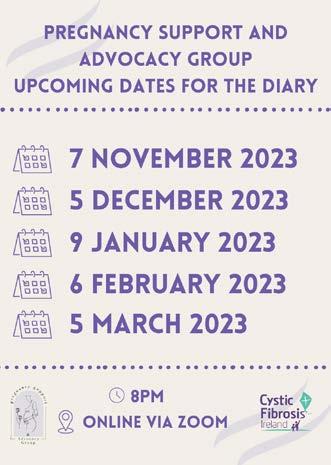
For other Members Services queries, please contact:
Sam Byrne sbyrne@cfireland.ieEach year, the circulating flu viruses change, so each year the composition of the flu vaccine changes to provide protection from the new strains of flu virus expected. The flu vaccine helps your immune system to produce anitbodies (proteins that fight infection) and protects against the four circulating strains of flu virus. This means that if you have had the flu vaccine and you come into contact with the flu virus, the vaccine can stop you getting sick. Influenza vaccines usually reduce the risk of infection by 40-60%. Influenza vaccines also reduce the severity of illness, complications from influenza, reduce influenza-related hospitalisations, and admissions to critical care units.
The 2023/2024 HSE seasonal flu vaccination programme will offer two vaccines:
• Quadrivalent live attenuated influenza vaccine (LAIV), nasal application for those aged 2-12 years and children at-risk of flu aged 13-17 years
• Inactivated quadrivalent influenza vaccine (QIV) available for all other eligible populations including those eligible children (aged 2-17 years) with contraindications to LAIV (QIV is licensed for those 6 months of age and older).
• Adjuvanted Quadrivalant Influenza Vaccine (aQIV) for older adults (aged 65 and over) is not available this season. All older adults are recommended QIV this season.
People with CF are regarded among at risk groups eligible for free flu vaccination. You can get your flu vaccine for free now at your GP or your pharmacist.
If you are 65 or older or have a long-term medical condition, you should also ask your GP (Doctor) or pharmacist about the pneumococcal vaccine, which protects against pneumonia. You usually only need to get pneumococcal vaccine once.
No. The flu vaccine doesn’t protect against COVID-19. It is important to get both the flu vaccine and the COVID-19 vaccine/booster. This is because Flu and COVID-19 are caused by different viruses. Flu and COVID-19 can both cause serious illness and if you get them you might need to be admitted to hospital. It may be difficult to tell the symptoms of flu apart from the symptoms of COVID-19. If you have had the COVID-19 vaccine you should still get the flu vaccine. You can get a COVID-19 vaccine at the same time as the flu vaccine if it is offered to you. Visit the www.hse.ie for specific information related to boosters.
It's Flu Vaccine time
Here's a reminder of what you need to know.

To further celebrate our 60th anniversary year, we opened the doors of CF House in Rathmines to the wider public for the 18th Culture Night 2023. Cystic Fibrosis Ireland was one of many charities who took part in Culture Night with the support of WeAct, the national awareness campaign to celebrate the impact of Ireland's charities and community groups.
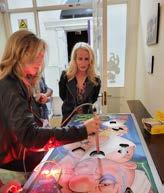

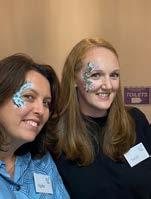

We were delighted to be joined in person by singer Grace Shesgreen, who showed us to the power of her voice through songs which held a personal meaning to her and her journey as a PWCF. The Highest Harp team joined us for a celebration of their achievement and we were very lucky that Sibohan Brady, record breaking harpist, treated us to a rendition of 'Little Bird' amongst other beautiful compositions.


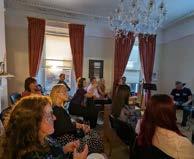

This wonderful occasion was also online and another of our musical members you may be familar with, Aileen Henderson, who couldn't join in person, gave us an upbeat pre-recorded compilation of her favourite tunes to close the event and send everyone home with a dance in their step. Thanks to all our guests for joining us and to the staff, volunteers and Board members who helped before, during and after the event finished, making the evening a great success. We are very much looking forward to Culture Night 2024!
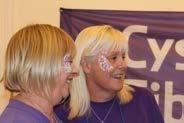


Caroline Heffernan, CF Advocate, Mum, Nana and PWCF, recalls her recent trip to the summit of Kilimanjaro, Tanzania. Among a team of twenty, this unique trek was an attempt to break the world record for playing the Highest Harp Concert ever as well as a fundraising initiative for Cystic Fibsrosis Ireland. Caroline recounts her story, in overcoming this challenge of a lifetime.
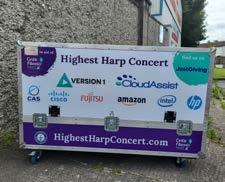
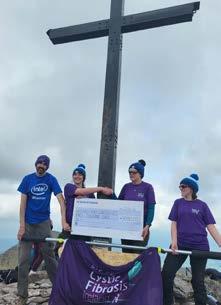
My Journey to Kilimanjaro started on a very wet and soggy Thursday evening in September 2021.
After cycling from Malin Head to Bundoran with an amazing crew of cyclists on M2M, I rushed to Zoom with Siobhan, Sean and Stephen to discuss the possibility of joining what I can only describe as a crazy adventure: to bring a harp to the top of Kilimanjaro to break Siobhan’s existing Guinness World Record of the highest harp concert and raise funds for CFI.
My initial thoughts, they are crazy.
I listened to Sean tell the back story, why they wanted to attempt another record and why they chose CFI and I was hooked. I didn’t know what lay ahead or how I was going to achieve the training - my one moan on the bike is “I hate hills” but here I was contemplating climbing Kilimanjaro! Three became four and the core team of the HHC was formed.
My family were terrified I had bitten off more than I could chew, worried about my health, CF and altitude. Before I committed 100% I spoke to my CF team, CF doctors who know my health status, microbiologists and others with CF and friends who had climbed Kilimanjaro, some successfully and a few who made didn’t quite summit.
From the start I said that I would never put my health at risk. No one knows what you will feel like at altitude until you experience it so my motto was, train hard, get to the start line and give it my best shot. For me failure would have been not taking this once-in-a-lifetime opportunity, summiting was a bonus.
Our first in person meeting was in October 2021. I was apprehensive as I didn’t know how fit or fast they’d be, plus it sounds like I’m breathless when I hill walk so what will they think? Would they regret asking someone with CF to join? I
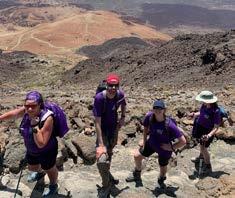
needn’t have been concerned, we instantly clicked. That first day, I met Nollaig who gave me a run for my money in the chatty stakes! She chatted all the way to the top with me reassuring her that on the way down she wouldn’t get a word in as it would be my turn to talk! And that was how we continued….
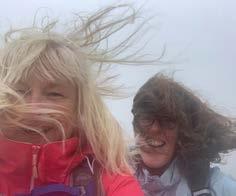
As each month passed, more and more people joined our monthly hikes and the team. My happiest point was when my best friend Norma (of her own accord) decided she was coming. It also gave my family relief as they knew Norma would do her very best to keep me safe and not let me push too hard.
We covered quite a few hills and mountains in Ireland. My most memorable has to be my first attempt at Carrauntoohil. Three quarters of the way up the Devils Ladder, we had to put on our water proofs as the weather had turned nasty. I have to say I was grateful we had the intrepid explorer, Pat Falvey, with us that day as the wind and hailstone battered our bodies. The ice and snow on the top half of the mountain was scary - needless to say we didn’t summit that day.
At one stage we were huddled like penguins on our knees as we couldn’t stand up, I slid down most of the top part on my bum, Devil’s Ladder had become a water fall and we were frozen solid. We realised then our waterproofs were not the best quality. When I arrived home in Tuam I assured my mum that Everest will never be an option after that climb.
The little hill known as Castlehacket and the better known Croagh Patrick became my stomping grounds to train on for the next 18 months between meetups. At the end of 2022, Laura joined us. Being local to us meant as a threesome, myself, Norma and Laura would head off on road trips together or hike Castlehacket for hours on end. We were delighted to have Laura join, as she is a seasoned rambler and very knowledgeable about all things hiking. We even had a training trip to Tenerife to climb Mt Teide which was of huge benefit to all who travelled, plus it was nice to have that trip away together.

Finally the day came and meeting everyone at Dublin airport was so exciting. We had three people joining us who we had only met on Whatsapp so it was great to meet them and get to know everyone on our stop overs. Soon enough, there wasn’t much we didn’t know about each other as health check questions were thrown out each day which consisted of quite personal information even down to our toilet habits!

On our arrival into Kilimanjaro airport we had a VIP welcome with TV crew, local harpist Marisa, dancers etc. some of us even joined in. Special thanks to Ambassador Mary O’Neill who flew in from Dar es Salaam to welcome us to Tanzania and present us with the Irish flag to represent our country the top of Kilimanjaro. There was also a civic reception held for us before we started to hike. We really were welcomed like royalty, the friendliness is something I won’t ever forget.
Kilimanjaro to me was the unknown. It was scary. Initially I worried that my pace would be too slow, but it turns out the slower, the better and the challenge was more emotional than physical. Don’t get me wrong, there were stops where my breathing was put under pressure but a short break sorted that.
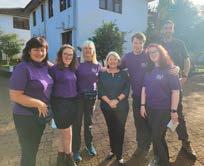
The first evening as I tried to crawl into our tent my legs cramped up and I fell onto the blow-up bed exhausted not even able to take of my sweaty gear, (thanks Norma). Needing Norma’s help that first evening, sent my head into over drive and I had a very bad nights sleep which had a knock-on effect for the second day. However, I was pleasantly surprised that all the training paid off and on the second day, I didn’t feel half as bad.

However, in the of the darkness of the second night, I started feeling guilty that I was here, alive and achieving so much when so many friends with CF had passed. Again, a bad night sleep.

Our routine health checks in the morning were never the best for me. I had to take my head aside and give myself a good talking too. My goal was to do my best and I had to stop myself sabotaging one of the most adventurous things I have done to date. Stubbornness and having the team around me, in particular Norma and Laura, put me back on track. Even being told "no porridge, no summit" didn’t faulter me, I believed in myself, and porridge wasn’t needed to get me to the top.
Throughout the five days up, everyone had good and bad days. On day three, one of the team, Stephen, had to turn back due
to altitude sickness, which was devastating for everyone. But seeing how sick he was, he made the right decision not to continue. I’m gutted for him but we must all remember your health is your wealth and you can’t risk it at any cost. We really relied on the porters more and more – they were, are, amazing people.
Crossing over the Kissing Rock on the Burranco Wall was interesting... I’m glad I’m not afraid of heights as when you look down it is a sheer drop off the edge of the cliff. Finally, we reached the last resting camp. You don’t get a nights sleep - only a couple of hours rest after dinner, and I could hear the change in breathing, a little laboured at the slightest movement for some. It wasn’t until I went to lay down that I got breathless but actually I think it was panic in thinking of the final ascent.

I have goose bumps typing, particularly as I know words can’t describe the true feeling of our achievement. We walked into the darkness, in the quiet of the night, not being able to see where we were going. 40 people moving as one, as we walked in each other’s footsteps. It was the most peaceful, amazing, scary, tough hike.
When the sun started to rise and I could see the glaciers and the peak of Kilimanjaro. I felt like I was close to all who have passed as it felt like you could step into heaven. Seeing the Kilimanjaro sign and taking our picture was epic: we made it

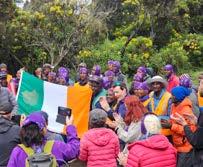

It was worth every sacrifice that everybody made to get to here. All that was left, was for Siobhan to play the concert.
I couldn’t have asked for a better finale than standing beside Siobhan as she played the harp, with Norma reciting the president’s poem 'The Prophets are Weeping' and introducing 'Little Bird' in memory of all our CF angels. This is a memory that doesn’t need to be on film, it is etched in my heart forever. I am very proud of Siobhan and grateful to her for honouring PWCF with her music.
What goes up must come down, but for the record I’d prefer a zip line. Descending was seriously tough, it is like going on holidays - you don’t mind how long it take to get there as you’ll be having a great time but coming home always seems longer. Believe me every dusty step on the way down was torturous as the sandy ground moved with you. As we started, we finished with a massive welcome, TV cameras and reporters to congratulate us on a successful hike, and it was lovely to be reunited with Stephen and hear of his adventures while we were gone.
"It was an amazing achievement. It started with excitement and anxiety and ended with wonder, happiness and relief. But in between there were bouts of misery, worry. exhaustion, pain, cold, tired and sick. Asking myself 'why did I come here?' Then I thought I'm here with my best buddy and even though climbing Kilimanjaro was the hardest thing we have ever done, it was the coolest thing we have done, and I will never forget the experience. Delighted with our efforts and the experience. I didn't really realize it till I got home what we actually achieved. It gave me a great sense of self-worth and delighted that I did it."
Norma"My own personal disappointment of not being able to reach the summit due to illness paled into comparison to the joy and pride I felt for Caroline and the team when news came through that they had made it to the top of Kilimanjaro and a successful highest harp concert was performed. This was a huge team effort that was 100% successful in achieving its goals, although personally, I might have to return again to complete my side of the deal!."
Stephen"Summiting Mt. Kilimanjaro with such an inspirational group of people was an experience I will never forget. I thought at first that the highlight of the trip would be listening to Siobhán play the harp alongside the Cystic Fibrosis Ireland flag at 5895 metres high, and while that was incredible, the highlight for me was actually the camaraderie. We all had plenty of ups and downs day by day, but laughed through it all and picked each other up when needed (emotionally and literally!)"
Nollaig"Climbing Kilimanjaro has been my biggest challenge, which I could overcome thanks to the fantastic group that I took part in. I would definitely do it again!!"
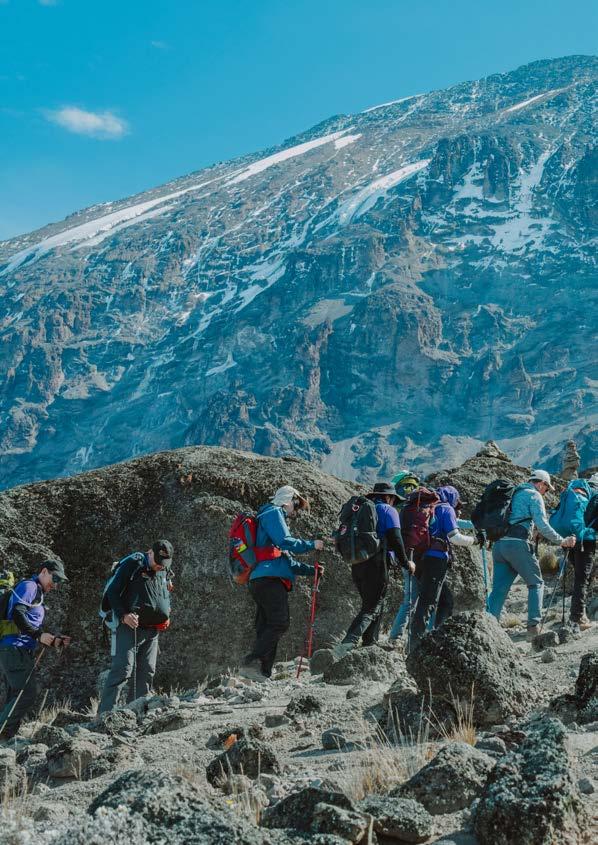 Pablo
Pablo
"I feel so privileged to have been part of such an amazing group of people. I was late to join the team but welcomed to the family immediately. To see the strengths of everyone, shine throughout the week, and even the months in advance was so inspiring. Everyone in this world has challenges, some are more visible than others, some are more socially accepted than others, but when you have a group of people fighting together for the same goal, everyone becomes equal and anything is possible. I wish I knew before what I know now, and I would have paid more attention! Such a fantastic week with a wonderful group of people. Can we do it again?!"
Susan"I am so grateful to have shared such an amazing experience with an incredible group of people, including two superhuman women, Caroline and Siobhán; memories and friendships to last a lifetime!"
David"Why did I climb Kilimanjaro?? For me, it was an escape. My husband came into the room on a dark, cold, miserable December evening while I was doing homework with the kids. Caroline had put up a post on a whatsapp group that he was in, I don't think he had fully finished the sentence when I said ‘yes, yes, yes - sign me up! I had been looking for something to do that was just for me - don't get me wrong, I love my family - but sometimes you need something that is just for you and you alone - and for me, this was it. For anyone that knows me - I love to wander and ramble down different paths and explore. And to do it with 18 likeminded people, was it ever a question that needed to be asked? The journey was incredible - we met every month around Ireland to hike together, and I met with Caroline and Norma more frequently as they lived close by or as my husband says ‘I was with them all the time!’. I don't know which I enjoyed more - the adventures or the company. Kilimanjaro was beyond my wildest dreams - to trek for seven days non-stop, with no one pulling out of me, to be in my own headspace, was pure bliss. Kilimanjaro took my breath away then gave it back to me as I descended. Life is short, do what excites you, to quote the poet Rumi "set your world on fire, seek those who fan your flames" for 2023 I think I most definitely did just that. It was a journey that I will never forget and truly the best ‘wander’ I have ever embarked on with 18 strangers that I now consider my family."
 Laura
Laura
"Summiting Mt. Kilimanjaro with such an inspirational group of people was an experience I will never forget. I thought at first that the highlight of the trip would be listening to Siobhán play the harp alongside the Cystic Fibrosis Ireland flag at 5895 metres high, and while that was incredible, the highlight for me was actually the camaraderie. We all had plenty of ups and downs day by day, but laughed through it all and picked each other up when needed (emotionally and literally!)."
When I think of what we did in Tanzania, I recall the recent LinkedIn post with the title '20 minute harp concert at 10% Oxygen' which summed up the pinnacle of the achievement on Mount Kilimanjaro however there was so much more to this fundraiser which was due to so many volunteers to make this happen. From the comradeship of the team members and the sacrifices that was made to prepare for this trip to 19,000ft including those who were not able to join us at the summit. For me, it was an unforgettable experience with a fair share of twists and turns that could have jeopardise this Guinness World Record but it was the tremendous support from those adventurous and kind-hearted team members that kept my spirits up. However, my admiration is for the two women at the centre of this fundraiser, Caroline who was a rock despite my constant challenges with CF and, of course, my daughter Siobhan who is simply a Rockstar."
Sean CiaraHello my name is Tamara and I am a Digital-Health Post-Doctoral researcher working with the adult CF team (3CF) in Cork University Hospital. You can click here to learn more about me, and click here to learn more about our CF team.
During the pandemic, our unit setup a telehealth service to support PwCF to receive care safely. Telehealth is a term that can mean a lot of things, but at its simplest it is virtual consultations between a patient and their care team (for example Webex, AttendAnywhere, WhatsApp video call, phone call).
We conducted a research study that looked into what PwCF and the CF team at Cork thought of telehealth, and had some very positive results. We also got some great suggestions on where else telehealth could be used to support PwCF and their families.
Since then, we have done a few in depth literature reviews, and learnt a lot about CF telehealth but there still seems to be a lot that the CF scientific community don’t know about guidelines and how to setup a telehealth service. To learn more about this, we are setting up a European Cystic Fibrosis Symposium (ECFS) working group to try and learn more, and to pool as much knowledge together as possible to create guidelines.
As part of this, we hope to have some Public Patient Involvement (PPI) contributors join our research team and help us with designing a study, understanding the results, and turning it into guidelines for CF telehealth.
If you are new to PPI, this is different from being a participant in a study. Instead of signing consent forms and providing data, you will instead be actively involved as a member of the research team, using your experience and knowledge to help shape how we run the study, what data we should look at, and how we can understand the results more. CFI have worked to create their own PPI panel, and if you are interested in learning more about PPI click here

The overall objective is to investigate how telehealth can complement CF care in a post-covid era.
• The first aim will be to identify generalisable guidelines that can aid CF centres developing their own hybrid models.
The next aim will be to investigate which aspects of telehealth can be harnessed to further compliment CF care.
We are hoping that 7 contributors will join our research group so that we can have a broad range of experience and insight. We are hoping people with the following experience will join our team:
• 2 adults with CF,
• 2 adolescents with CF,
• 2 parents of children with CF,
• 1 individual caring for someone with CF and does not have CF, preferably a sibling or a partner.
There are two arms of this research project. The first is the Irish perspective to CF telehealth, and this is a 2 year long study, and we are already 9 months into the first year. The second part is the ECFS working group, which if accepted will be 3 years long.
If you were to join our research group we hope to have:
• 5 formal meetings over the next 1.5 years to discuss the design, data, and results.
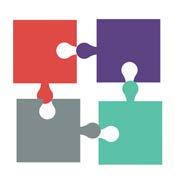
• 1 co-creation workshop at the end of the 1.5 years to begin shaping these guidelines.
• After this, there is the option to continue your involvement in this study at an EU level via the ECFS working group.
I will also be in contact with you throughout the study via email or other means that suits you.
We have a budget to reimburse PPI contributors for their time. These reimbursements will be made through University College Cork (UCC), who are currently finalising their financial policy on how to process these payments. However, we shall have a definite answer to this towards the end of September.
“Pathways” is a research project that seeks to support adolescents with Cystic Fibrosis (CF) to successfully manage their health, as they prepare for their transition to adult services. We are particularly keen to understand more about how young people manage their health and their experiences of transitioning to adult services given the new treatments available to young people such as Kaftrio. To get started, we are inviting young people living with Cystic Fibrosis to join an online panel and act as our advisors.
Are you a young person interested in shaping research designed improve quality of life for young adults with Cystic Fibrosis? Apply to become a member of our Youth Advisory Panel / Young Adult Panel.
We are looking for 10 young people to help ensure our research is focused on issues that are important to young people with Cystic Fibrosis. If you are aged 16 or 17 and would like to get involved or are a parent of a young person who might like to get involved, get in touch and we can send our information form. For those aged 16-17, you will need parental permission and we need to know you are also happy to be involved.
As a panel member you will get an opportunity to:
• share your views and have your voice heard on issues that are important to young people with CF
• to develop your communication, decision making, teamwork and research skills
• engage with and learn from a group of peers contribute to research and help to shape our research activity
Why do we need your input?
• We want to learn more about your experience and what is important to you
• We want to use what you share to better support adolescents with Cystic Fibrosis (CF) to successfully manage their health and prepare for their transition to adult services.
What can I expect / How do I apply?
Members will be invited to join a meeting, held online, every two months for the duration of the project ending in 2024. We would like your feedback on:
• how we communicate with young people with CF
• our research material
• what issues are most important to young people living with Cystic Fibrosis
As a panel contributor you are not a participant in a research study but a valuable member of the research team, actively involved in the decisions made about the research. You bring a wealth of expertise from your lived-experience of Cystic Fibrosis. Panel contributors will be reimbursed for their time.
Dr Caroline Heary & Dr Angeline Traynor angeline.traynor@universityofgalway.ie
PPI
Public and Patient Involvement (PPI) in the research process ensures that research is meaningful and of benefit to those directly and indirectly affected by CF. PPI creates a partnership between people affected by CF and researchers. It is more than a tokenistic gesture to comply with policy, but can provide a real and substantial benefit to all key stakeholders.
PPI can:
Promote a sense of empowerment and value among patients
Enhance patient trust in researchers
Improve researchers’ insight into their own research area
Help researchers identify barriers and com e up with solutions to research
Increase trust and acceptabilit y in the patient community of research findings
Improve the dialogue between healthc are professionals and patients
Establishing Natural History in an Advanced New CF Care Era (ENHANCE).
This study will focus on various aspects of the lives and health of children from birth to adulthood with CF ENHANCE will take place over a five -year period initially with a hope of further long-term extension into the future
Huge progress has been made in managing cystic fibrosis in children over the last number of decades. A lot of what we understand about CF in childhood comes from research prior to some of the more dramatic improvements in the care of CF in children over the last 10 years. It’s going to be really important for us in the future to ensure that we really understand the evolution of symptoms and signs of disease in CF in this new era. It’s going to be very important for us to know whether outcomes in some children are better than in others and whether some previously seen aspects of disease can be avoided. We want to understand the differences between children without CF and children with CF and understand why some children with CF do better than others.

ENHANCE is a real-world study examining clinical outcomes of people with CF (PwCF) in this new CF care era. This study will involve children with CF across 13 paediatric CF centres in Ireland and the UK. We will be examining a wide range of well-established tests in the people p articipating in the study, as well as some newer, more sensitive tests looking at how the health and quality of life in people with CF changes over time .
As part of this study, the patient will undergo several tests on an annual basis from the time of recruitment . The tests are described in detail in the procedures section of this information leaflet. Where possible we will try to complete these tests at the child’s CF clinic visits, however we may ask that participants attend an additional visit once a year to complete remaining tests that are required as part of ENHANCE. Various samples such as blood, throat swabs and stool samples will also be collected and stored in our labs in Dublin (Children’s Health Ireland).
ENHANCE will be co-ordinated through RCSI and Children’s Health Ireland in Dublin. The Lead Researcher is Paul McNally, a paediatric CF doctor in CHI. Jane Davies , a paediatric CF doctor from The Royal Brompton Hospital in London , is the co-Lead. Karen Lester is the Project Manager for the study, from RCSI/CHI Dublin . We have a lead consultant and researcher at each hospital, and a number of sites and collaborators in Europe and North America.
Children’s Health Ireland at Crumlin, Dublin (Des Cox)
Children’s Health Ireland at Temple Street, Dublin (Mike Williamson)
Children’s Health Ireland at Tallaght, Dublin (Lucy Perrem )
University Hospital Limerick, Limerick (Barry Linnane)
University Hospital Cork, Cork (Muireann Ni Chroinin)
University Hospital Galway, Galway (Mary Herzig)
Royal Brompton Hospital, London (Jane Davies)
Royal Belfast Hospital for Si ck Children, Belfast (Damien Downey)
Royal Hospital for Children and Young People, Edinburgh (Don Urqhuart)
Alder Hey Children’s Hospital, Liverpool (Rebecca Thursfield)
Royal Manchester Childre n’s Hospital, Manchester (Anirban Maitra )

Great North Children’s Hospital, Newcastle (Iram Haq /Malcom Brodlie)
Noah’s Ark Children’s Hospital, Wales (Lena Thia)
ENHANCE PPI Information Leaflet, V1.1 31Aug2023 Page 2 of 4
We aim to recruit approximately 450 children with CF and 100 children without CF across all 13 sites. Children with CF and children without CF will complete a set of assessments annually from enrollment (for details please see below). Some more advanced tests like CT scans, spirometry, and multiple breath washout (MBW) are required as part of this study– these are age dependent assessments so may not be completed by all participants at every visit. Below we have listed detailed information on the assessments that will be completed as part of this study. A table can be found in the following section that outlines all procedures.
ENHANCE will follow participants for five years. ENHANCE study assessments are outlined below in Table 1.
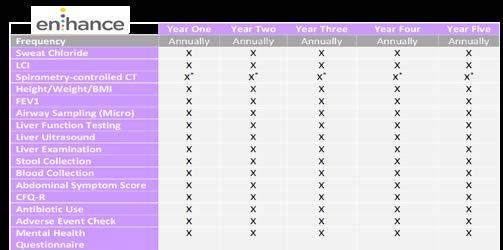

Table 1. Schedule of assessments. Each visit has a study window. For ENHANCE, each annual visit will have a window of +/ - 1 month.
*CT scans will be performed at the age of 6 ,12 and 16 years (in the initial and follow -on studies). In centres that perform scans every two years, as part of usual care, we will collect the images and use them for the study.
The PPI group will maintain involvement over th e entire course of the study. The group will advise on effective study conduct, and guide strategies for recruit ment and retention of subjects. The group will also advise on ongoing dissemination and communication of study findings. For those interested, there is an opportunity to help writing manuscript or presenting at conferences. We are looking for you to commit to meeting virtually three times annually for year one and five and twice annually for years two, three and four.
You will not receive direct compensation for lending your time to the PPI meetings but will receive a gift voucher valued at €75/£65 for each PPI meeting you attend. Direct reimbursement will be given for any out of pocket travel expenses that are incurred for travel associated with attending PPI meeting.

You can get more information or answers to your questions about the study, your participation in the study . Thanks for considering getting involved in the PPI group.

As summer comes to an end, CFRI are entering a new season with a brand-new logo! While we are sad to say goodbye to our original logo, we thought it was time to modernise.
Our new logo takes the main rose motif from the original logo & puts a modern twist on it. We’ve got a new, more modern font & have used our full name instead of the CFRI acronym to really make it clear who we are.
We’ve moved away from the dark red & orange colours to a brighter and more contrasting combination of dark teal, coral orange and a light green. We hope you all like our new logo!
We are so pleased that our celebratory ‘20 years and counting’ report is nearly live! The report aims to highlight the key moments in the history of CFRI and illustrates the value of over 20 years of CFRI data. We presented some of this data at the CF Ireland conference in March so we’re pleased to now see these presented officially in our soon-to-be published report. We will share the report via social media & you will be able to find it on the publications section of our website: https://cfri.ie/publications/
The report starts by giving a brief overview of CF care in Ireland over the last number of decades. It then highlights some of the key moments in the history of CFRI including, but not limited to, how the registry got up and running, our role in informing the Pollock Report, our past & present research programme and where we are now.


The main section of the report focuses on presenting trends in data from CFRI over the years. For example, we look at the rapid growth of registry coverage of the CF population in Ireland in its early years and in later years, maintaining consistently high levels of coverage (Figure 1). The report also looks at trends across a number of clinical outcomes. For example, overall decreases in chronic infection prevalence, improvements in lung function, prevalence of complications, medication use and hospitalisations.
Lastly, the report looks to our colleagues in the wider CF to comment on the future of the registry and the role it needs to play going forward.

We must extend thanks to the PWCF, and parents/guardians of PWCF, who have agreed to participate in the registry over the years. Your participation and continued engagement with the registry are the reasons why we are able to present the wealth of data in this report. We also want to acknowledge the foresight of CF Ireland in the initial establishment of the registry - from an acorn a mighty oak has grown!
We are excited to announce that Dr Laura Kirwan has been ratified onto the ECFS Patient Registry Executive Committee. Laura’s role on the committee is further strengthened by her expertise in statistics. We look forward to seeing what opportunities this role will bring.
Robyn and Laura loved taking part in the CF Ireland Head2Head Walk – it was a great event & we were so glad it stayed dry!

We have just launched an updated registries guideline document which is a collaborative effort between Health Research Charities Ireland (HRCI), CFRI, and National & International Skin Registry Solutions (NISR). This report was originally published in 2018 and sets out a series of factors groups should consider if they would like to set up a registry. Based on an event we co-hosted in early 2023, we have reviewed and updated these guidelines. The guidelines were officially launched at the most recent HRCI board meeting, but you can find the guidelines here. Off the back of this, we plan to launch a registry working group to look to the future for patient registries in Ireland.The rest of 2023 is looking busy. The CFRI AGM and staff away day are coming up and we are also implementing a new data quality programme. Our data quality programme will support us to ensure we are always collecting the highest quality data possible across all centres.
If you would like to participate in the registry, please contact your CF Centre of the CF Registry at info@cfri.ie. Participation is entirely voluntary. You are free to revoke your consent and withdraw from the registry at any time. If you have any questions about participating in the registry or about the data we collect, get in touch with us at info@cfri.ie.
Making your Will and thinking about making a bequest to a charity you care about, like Cystic Fibrosis Ireland, are both things to consider during November which is
- My Legacy Month
Having a Will gives you the security of knowing your loved ones will be looked after when you are gone. During My Legacy Month, you are encouraged to take the first step in creating your Will by scheduling an appointment with a solicitor. Cystic Fibrosis Ireland are members of My Legacy.ie, who have the backing of hundreds of legal companies across Ireland and can provide expert advice and guidance on writing a Will at any time of year.
It is usually a much MORE straightforward and less expensive process than you might anticipate, and when you book your appointment, your solicitor will explain rates for drafting this crucial personal document.
After providing for family and friends and making all other critical personal decisions, opting to leave a legacy contribution to a charity, such as Cystic Fibrosis Ireland, is a wonderful way to support your favourite cause. Every legacy, no matter how large or small, is an immensely generous gift of hope and confidence for the future of people with CF in Ireland.
We recognise that leaving a legacy is a very personal decision. Some people choose to notify us that they have remembered Cystic Fibrosis Ireland in their Will. Others might rather keep their desires hidden, leaving it to their executor or solicitor to notify us when the time comes.
1. Make an appointment

2. Look after your loved ones first

3. Consider a legacy to charity

1. Make An Appointment
Avail of expert advice and support
Take the initial step toward discussing your future goals and decisions.
2. Look After Loved Ones First
Why a Will is important.
A Will provides for loved ones, assigns guardians, protects your possessions, and aids in the reduction of inheritance tax.
3. Consider A Legacy to Charity
Your gift may be big or small and is tax free
If you have a cause close to your heart such as Cystic Fibrosis Ireland, please consider leaving a gift to that charity in your Will.
Many people can afford to give far more in their Will than they ever could when they are alive. It will not cost you anything in your lifetime, but your generosity will allow us to support future generations and establish long-term plans for Cystic Fibrosis care throughout Ireland
By leaving a legacy gift to Cystic Fibrosis Ireland you help us to;
• Support groundbreaking research so that one day, CF can stand for 'Cure Found.'
• Fund specialist Cystic Fibrosis multidisciplinary posts in hospitals throughout Ireland
• Fund Cystic Fibrosis units around the country, including in-patient, day care, and out-patient institutions.
• Directly assist people with Cystic Fibrosis through exercise, transplant, fertility counseling, and bereavement grants.
l For more information on leaving a legacy gift in your Will, please see our leaflet “Your Legacy Could Be Life Changing”, visit our website at www.cfireland.ie or the My Legacy website www.mylegacy.ie. Alternatively, you can contact us on 01 496 2433 / info@cfireland.ie for more information.
• Provide counselling, education, and advocacy services to people who have Cystic Fibrosis.
Take the time to make a Will and consider a legacy gift to enable Cystic Fibrosis Ireland help future generations.
For further details on any of our fundraising events, visit our website www.cfireland.ie, contact the CFI Fundraising Team on (01) 496 2433 or email fundraising@cfireland.ie.
For all the marathon runners, don’t miss the Irish Life Dublin Marathon on Sunday, 29th October.
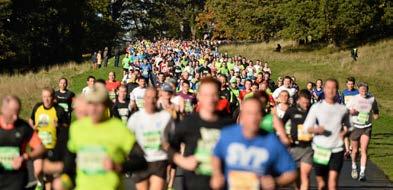
If you have secured a place in the marathon and would like to part on behalf of the Cystic Fibrosis Ireland Team, please register your interest NOW on our website at www.cfireland.ie. We will contact you and provide you with your Cystic Fibrosis Ireland shirt and fundraising pack for the day.
We will have a limited number of guaranteed places available for the Irish Life Dublin Marathon in 2024. To secure your place, please contact us ASAP by email fundraising@cfireland.ie or call (01) 496 2433.
Best of luck to all of our runners who are bravely taking on the New York City Marathon in November. We look forward to seeing all the lovely photos.
We will have a limited number of places available for the 2024 TCS New York City Marathon once registration opens. Keep a close eye on our social media and make sure to register your interest on our website www.cfireland.ie as soon as details are announced to secure your place.
For further details please email fundraising@cfireland.ie

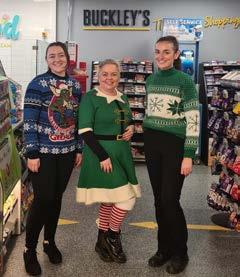
On Friday, 8th December, we are encouraging as many workplaces and schools as possible nationwide to support Christmas Jumper Day 4 CF in their places of work or virtually again this year!
1. Ask your work colleagues or fellow teachers and pupils to support Christmas Jumper Day 4 CF on Friday, 8th December. Encourage everyone to wear their Christmas Jumper to work in return for a €5 donation to support people with Cystic Fibrosis in Ireland!
2. Register your interest to participate at www.cfireland.ie and we will contact you and send you a Christmas Jumper Day 4 CF pack - balloons, bah humbug badges, posters, sponsorship cards and collection buckets as required.
3. Bah Humbug donation! If colleague does not wear a Christmas Jumper, ask them to make a donation of €10 in return for a ‘Bah Humbug’ badge! It’s all for a great cause!
4. Ask you company / school if they are willing to match fund the monies raised!
5. On the day, make sure to get everyone together in your place of work or on Zoom and take loads of photos!
Post them to our Facebook page (facebook.com/CysticFibrosisIreland), share them using the hashtag on Twitter or Instagram #ChristmasJumperDay4CF and tag us (@cf_ireland), or simply email them to us at fundraising@cfireland.ie so that we can share your fun with everyone else.
• Lodge the monies raised:
IBAN: IE59 AIBK 9310 7108 5785 93 BIC: AIBKIE2D
• Post a cheque to Cystic Fibrosis Ireland, 24 Lower Rathmines Road, Rathmines, Dublin
• Donate online at www.cfireland.ie
Please remember to include your companies / schools name as a reference so we know who it’s from!
Don’t forget register your interest to take part in Christmas Jumper Day 4 CF at www.cfireland.ie and we will help you organise everything for your Christmas Jumper Day 4 CF 2023 – Ho Ho Ho!
Stay in touch this Christmas with a Cystic Fibrosis Ireland Christmas Card!
Our Guaranteed Irish Christmas Cards are available online at www.cfireland.ie for just €6.99 per pack of 8 cards!

We have 15 different festive designs to choose from as well as three variety packs with four different designs of two cards. This is a lovely way to stay in touch with your friends and family this Christmas.
Best of all, the proceeds raised allow us to continue to provide much needed support and services to people with Cystic Fibrosis all across Ireland.
For the really adventurous looking for the challenge of a lifetime, International Treks are available across the year to climb Kilimanjaro, Machu Picchu and Everest Base Camp.
Register your interest to take part on our website www.cfireland.ie or email fundraising@cfireland.ie for more information.

It is not possible to list all of the Fundraising Events that have been organised since our last edition of Spectrum, but we would like to take this opportunity to thank everyone that has volunteered and raised money on behalf of people with Cystic Fibrosis. Every cent raised helps provide a better quality of life for people with Cystic Fibrosis and please keep up the great work. Here is a short summary of some of the remarkable efforts of our Volunteers:
Cystic Fibrosis Ireland would like to say a huge THANK YOU to everyone who took part in the 11th Annual Head2Head Walk on Sunday 10th September. It was a fantastic day with 450 people taking part.
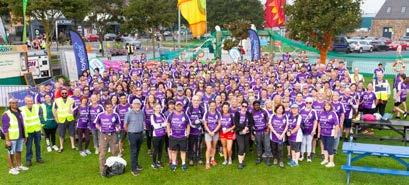
Lunch was provided at the half way point in Sandymount courtesy of our wonderful sponsors Scribbles, Fyffes, Ballygowan and Dunnes Stores. We would also like to say a huge thank you to our main sponsor this year MoyleRoe Corporate Services. The walkers then continued on their way towards the finish in Bray where they received their annual medal.
A huge thank you to James Downes, Lorri Downes, Mary McCarroll, Glen McDonnell, Denise O’Brien and Luke Kennedy and their team of volunteers who put an enormous amount of work into organising this event with CFI and ensuring it ran smoothly on the day. Special thanks also to the Gardai, the bus drivers, Daniel Kennedy our van driver and Annette O’Hanlon and Bernie Priestley who provided medical support on the day.
We would especially like to thank all our walkers for turning out yet again in huge numbers. We hope you had a great day and your fundraising makes an enormous impact on the ability of CFI to support people with CF in Ireland. If you have sponsorship money to lodge from the event, you can do so using the bank account details overleaf.
Please remember to include your name and ‘H2H’ as a reference so we can receipt accordingly.
IBAN: IE59 AIBK 931071 08578593 BIC: AIBKIE2D
We look forward to seeing you all again at the Head2Head Walk 2024! The date will be announced in the coming weeks.
A huge CONGRATULATIONS to our 39 cyclists who completed the Malin2Mizen Cycle4CF 2023, all arriving safely in Mizen Head on Sunday, 17th September after an incredible journey, cycling over 4 days from Malin Head to Mizen Head.

THANK YOU to the support team who provided amazing support to the cyclists throughout the event. Thank you to everyone who donated towards the cycle and to all our sponsors including Europcar, Maxol, Glenveagh Homes, Gleesons, CycleBike, Kellehers Ford Macroom, Donegal Local Sports Partnership and SPAR Ireland for their wonderful support of our cycle. Thanks also to our branches for support along the route from the Mayo Branch in Charlestown, the Galway Branch in Oranmore and the Cork Branch in Mizen Head.
Of course, the cycle would not happen without the year-round work of the Malin2Mizen Cycle4CF committee. Thanks to all the committee with a special thanks to Bernie Priestley, Lucy Hanlon and Caroline Heffernan. Thank you also to our amazing Cycle Leaders – Ken Doonan, John White and Richard Slevin who help with advice and training for all the cyclists all year round and helped guide each group safely from Malin Head to Mizen head with the support of the top class Bike Marshals and Lead Back Cars.
Registration for our Malin2Mizen Cycle4CF 2024 is now open with the cycle taking place from Thursday, 12th to Sunday, 15th September - 2024. You can register your interest now at www.cfireland.ie or for further information, contact us by email at fundraising@cfireland.ie or call (01) 496 2433.
Cystic Fibrosis Ireland would like to offer huge CONGRATULATIONS to everyone who took part in our Annual CFI International Walk from September 19th – 24th in Malta and Gozo! Each walker does an amazing job each year fundraising to take part in this walk. The funds raised are essential in allowing Cystic Fibrosis Ireland continue to provide support and services for people with Cystic Fibrosis in Ireland.
We would also like to take this opportunity to say a huge THANK YOU to volunteers Bernie Murphy and Vinnie O’Malley who work tirelessly as part of the CFI International Walk Committee to ensure the walk experience is an enjoyable experience for all walkers. Thanks also to our partner Sunway who have provided a fantastic venue and trip for this years walk.
Keep an eye on our social media for the announcement of the venue for our CFI International Walk for 2024 which will be revealed at the end of the walk in Malta. Places will fill up fast for next years walk so please register your interest on our website at www.cfireland.ie, call us on 01 4962433 or email fundraising@cfireland.ie to secure a place.

We are so proud to say that after months of extensive planning, vigorous training and a five day relentless hike by day and by night, the Highest Harp Concert team summited Mount Kilimanjaro and played their 20 minute concert in the early hours of 25th July setting a new Guinness World Record for the Highest Harp Concert ever! The team are also on track to hit their fundraising goal of €100,000.
Cystic Fibrosis Ireland would also like to extend a huge CONGRATULATIONS to our CF Advocate Caroline Heffernan for reaching the highest of heights, when she summitted Mount Kilimanjaro with the Highest Harp Concert Challenge last week. We are really proud of you Caroline and all the Highest Harp Concert team!
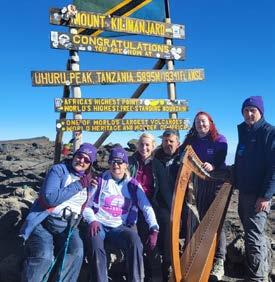
A huge THANK YOU to Paul Murphy (PWCF), his family and friends, who held a major fundraiser in Kells this Summer in aid of Cystic Fibrosis Ireland.
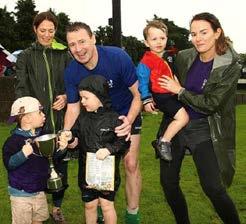
The fundraiser was a GAA Match between ‘Meath Legends and Local Heroes’ in memory of Paul’s father, Joe, and was called the 'Joe Murphy Memorial Cup.'
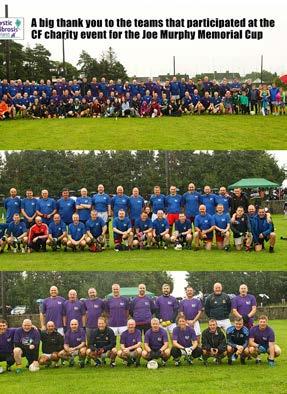
The game was played between Meath Legends and local hero’s .
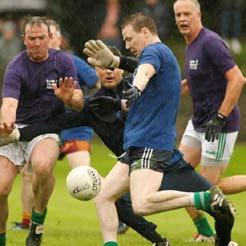
It was a massive success on very wet evening in July and in total Paul and all the people close to him, helped to raise a massive €22,600.
Pictured at the cheque presentation below are Paul, his partner Maggie and her children Reanna and Pryia, Paul’s twin sisters Eadin and Ashling with their five boys Oliver, Joe, Fionn, Paudie and Jack and Fergal from Cystic Fibrosis Ireland.
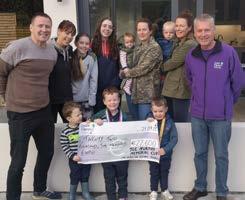
A BIG SHOUTOUT AND THANKS to Iris Murphy who completed a massive challenge – a Mizen to Malin Head Solo Walk in aid of Cystic Fibrosis Ireland.

Iris started the walk on Monday, July 24 at Mizen Head and covered over a marathon a day to reach Malin Head in County Donegal, raising an unbelievavle €13,500 and so much awareness for Cystic Fibrosis across the country.
Hat’s off to you Iris on completion of this stunning challenge!
Huge CONGRATULATIONS to Amy Keller who completed her 65th Park Run in St. Anne’s Park in Dublin on Saturday, 12th August as part of her 65 Roses Challenge.

Amy completed this challenge over the last 12 months completing park runs up and down the country, and never repeating a park run, to reach her amazing total of 65 Park Runs in August and raising a massive total of €7,460 as well as awareness of CF up and down the country.
Congratulations again Amy on this fabulous 65 Roses Challenge!
A huge THANK YOU to the ‘The Glens Girls’ (Robyn and her friends) who called in to CF House for a cheque presentation to Fergal and Sarah from our Fundraising team.
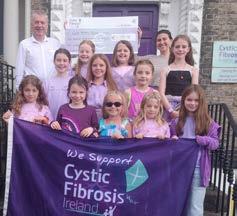
The Glen Girls held a cake sale during their school holidays and raised a whopping €2,330.98!
A massive thanks for this amazing fundraising effort, with thanks also to the parents and grown ups who helped with the baking – great job everyone and the funds raised will help CFI continue to support people with CF in Ireland!
